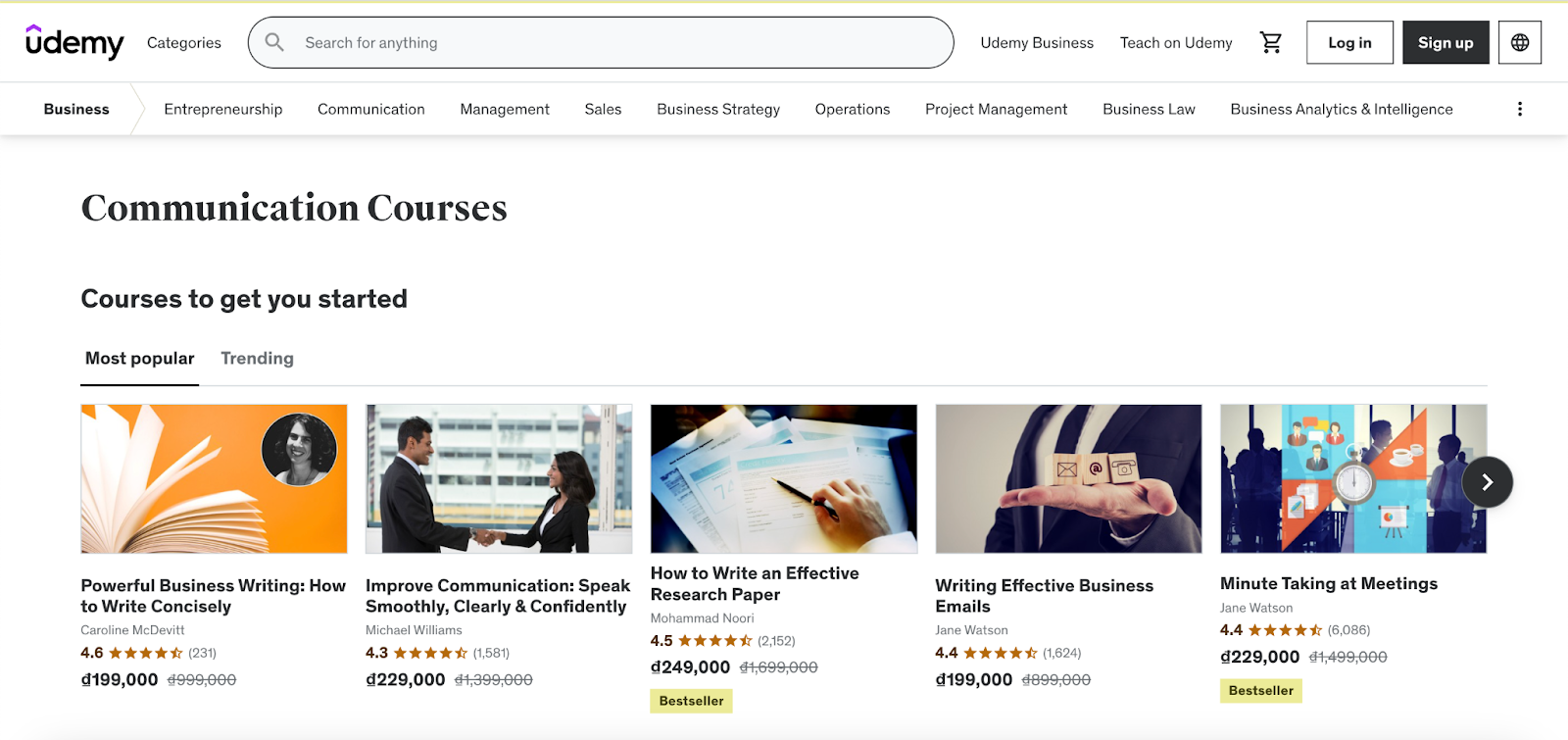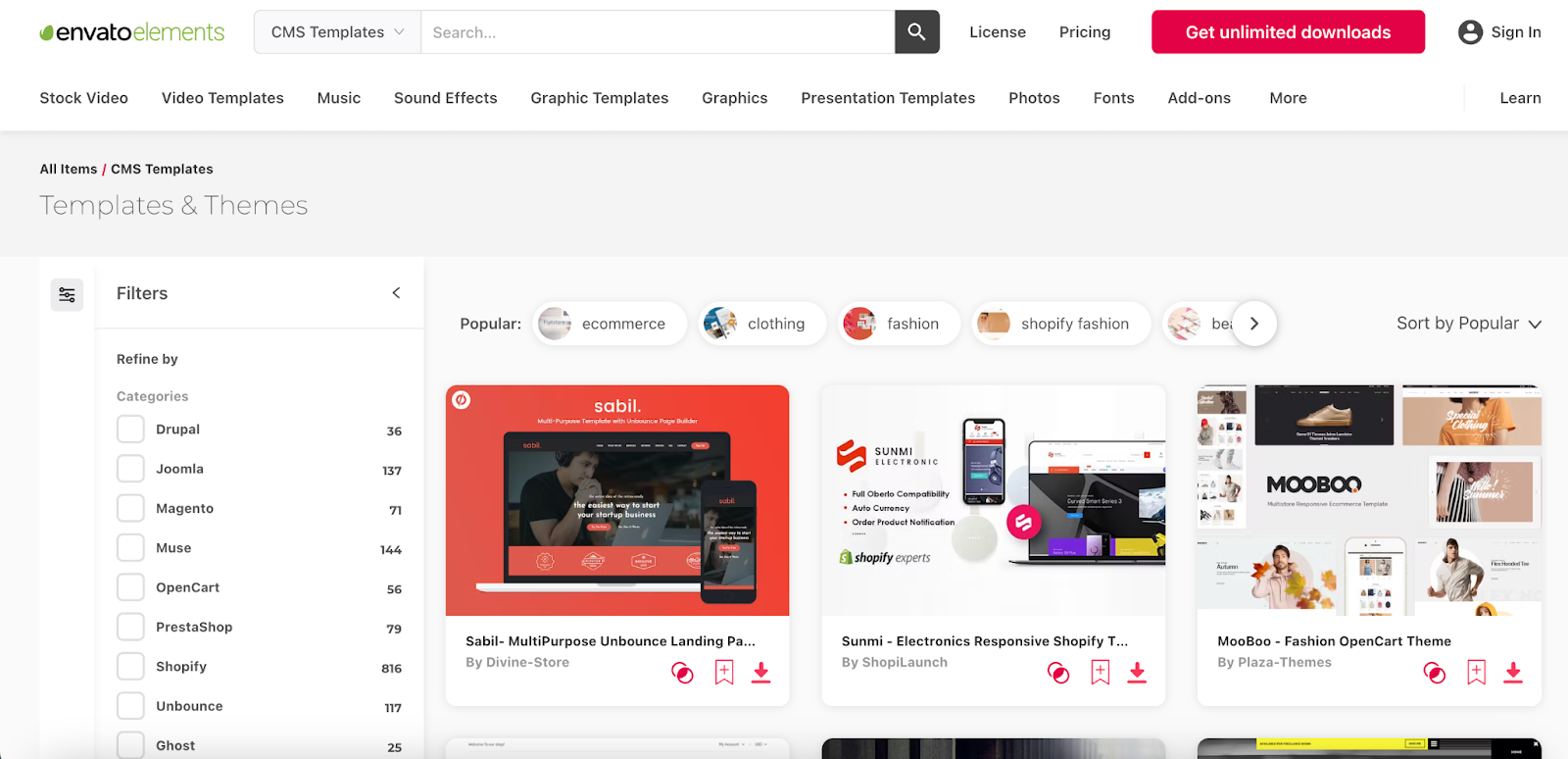How to Sell Digital Products in 2025: Promotion and Management in 2025
Summer Nguyen | 03-17-2025

Selling products online might sound simple at first. Billions of people log on to the World Wide Web every day. They visit sites, browse e-commerce stores, watch videos, and more. Yet, the competition to turn those consumers into your customers is a difficult one.
This guide will discuss how to help you connect with your audience and sell digital products online. Before we dive into the tactics, I want to quickly cover the basics. Let’s get started!
What Are Digital Products & What Can You Sell
A digital product is an intangible asset. It could be a photo, a WordPress theme, a plugin, an online course, an eBook, MP3, video, a downloadable product, or something else entirely. The great thing about digital products is that you create them once and sell them multiple times.
There are lots of benefits to selling digital products online. They include:
- You don’t have to hold any inventory, and shipping is free.
- They have high-profit margins once you’ve recouped the initial costs of production.
- You can automate the delivery process.
- You can sell digital products at almost any price point.
You can sell digital products in almost any niche. Moreover, digital products are a huge industry. For example, the e-learning industry is expected to be worth $374 billion by 2026.
Selling Digital Products: eCommerce Vs. Blogging
One of the first things you’ll need to decide if you want to start selling digital products is your route to market. You have two very different approaches. At one end of the spectrum, you have the digital product marketplaces. These are websites that sell digital products produced by individuals and companies.
Some examples of digital marketplaces include sites like:
-
Themeforest: they sell WordPress themes, premium plugins, and more
-
Shutterstock: they sell copyright photos, videos, and other digital assets for creatives
-
Udemy: they sell online courses created by individuals that cover just about any topic
-
Whop: they sell digital products, including eBooks, courses, and access to paid communities
Within their respective sectors, these sites are the market leaders.
At the other end of the spectrum, you have people who create and sell their content. There are plenty of famous people I could highlight. For example, Pat Flynn from Smart Passive Income has built out a series of courses covering different aspects of digital marketing.

There are plenty of other bloggers and business people I could point to who have taken this same approach. For example, Mark Brunson, the founder of Clickfunnels, has a range of courses that cost $1,000 or more to access.
The approach you take to selling digital products will impact your route to market. For example, if you’re running a marketplace, you can’t actively promote all of the digital products you list simultaneously. It just doesn’t make sense. On the other hand, if you’ve just got one digital product, or even two or three, you can create marketing campaigns to promote these offers.
You can see why it’s important that you choose your approach before considering how to promote your products. You can change your approach over time. You might start with a blog and end up running a marketplace. That’s fine.
How to Sell Digital Products
Generate ideas for digital products
Define the type of digital products you aim to sell and outline your offerings. Organize your thoughts and ideas by creating an initial product catalog. Once you have a list, narrow it down to a primary product and a few alternatives. Utilize market research (discussed below) to validate your product selection early on.
Successful product developers and business owners often employ these strategies:
Identifying pain points or opportunities within their industry and devising digital products to address them.
Exploring digital products or services that can alleviate challenges or fill gaps for their existing customers or target audience.
Perform market research
Validate your product concepts through market research, a crucial step in deciding what to offer. Gather insights using surveys, focus groups, and interviews.
While market research may seem daunting, costly, or time-intensive, various cost-effective strategies, such as utilizing social listening tools to monitor public social media discussions or distributing free surveys to industry connections, can help identify high-return product opportunities.
Define Your Audience and Buyer Profiles
Identifying your audience is crucial when marketing digital products. During market research, collect insights to define your target audience and create buyer personas.
-
Target audience: A group of customers with specific characteristics and demographics. Determining your target audience is a pivotal factor that influences business decisions.
-
Buyer personas: Detailed, semi-fictional representations of your ideal customers based on qualitative and quantitative data.
Starting to define your target audience and building buyer personas might seem overwhelming, but these initial questions can guide you:
How many buyer personas and target audiences should I start with? What benefits will identifying the target audience or buyer persona provide?
Answering these questions will provide clarity on your engagement strategy.
Determine the Pricing for Your Products
Setting an appropriate price for your digital product is crucial. Follow this brief guide:
Pricing Strategies
-
Tiered Pricing: Provide product versions at various prices to cater to different preferences.
-
Subscriptions: Establish regular payment plans, such as monthly or yearly subscriptions.
Determining the Right Price
-
Costs: Factor in production and marketing expenses to avoid losses.
-
Check the Competition: Examine similar products and understand the market’s pricing.
-
Value to Customers: Assess your product’s value to customers and price it accordingly.
-
Experiment: Try different prices to discover the most effective one for your audience.
Discounts and Deals
-
Limited Time Offers: Create urgency with short-term discounts.
-
Bundles: Package products together for added value at a higher price.
-
Loyalty Programs: Reward repeat customers with discounts or special perks.
-
Affiliate Partnerships: Collaborate with others for promotional efforts, often with discounted prices.
Ensure your pricing aligns with your product’s value and meets customer expectations. Adjust as needed based on market trends and customer feedback.
Develop a Marketing Plan
While establishing your website and online store, formulate a marketing plan for your digital product. Decide on promotion channels such as social media, your website, and newsletters. Prior to the product launch, build a following and initiate campaigns to create anticipation.
Consider strategies to increase traffic and convert visitors. Identify essential marketing tools, including email marketing and landing pages, to enhance your promotional efforts.
Set Up an Online Store
In the digital realm, having a dedicated website or marketplace page is essential—a central hub for your digital products and business. It’s not just about selling; it’s also a place where people can discover your brand through online searches and other channels.
For those new to the digital business scene, platforms like Shopify, Etsy, or Whop make it simple. Think of them as ready-made spaces where people already look for products. You can easily set up your own shop and display your digital products using templates that don’t need much technical know-how.
Benefits of Selling Digital Products
No Need for Physical Storage
Storing inventory can be costly and complex, involving expenses like facility, risk mitigation, taxes, and obsolescence. On average, warehouse space in 2022 costs around $7.96 per square foot. Selling digital products allows you to reduce or eliminate the need for physical storage, saving money on rent and avoiding additional expenses for packaging and shipping.
Ease of Addressing Issues
Dealing with problems related to digital products is often simpler than handling physical products. Issues with physical items may lead to returns, recalls, or redistribution costs while addressing concerns with digital products is more flexible.
Minimal Startup and Overhead Expenses
Unlike selling physical products, launching digital products doesn’t entail significant startup costs such as storage, labor, and shipping. Many ecommerce platforms offer free entry, with optional upgrades available, making the primary investment of your time.
Versatility in Product Selection and Launch
Selling digital products provides greater flexibility compared to physical products. Launching new products is easier, offering limitless possibilities. For instance, if you have a print magazine, you can effortlessly introduce a newsletter subscription to keep readers informed.
Diversification of Revenue Streams
Adding digital products to your business is a straightforward way to create an additional revenue stream, especially if your primary focus is physical products. Digital items can complement physical offerings; for instance, an artist selling ceramics can also create an educational podcast about their craft.
Potential for Exploiting Opportunities
The e-learning sector experienced significant growth even before the onset of COVID-19, and the trend has accelerated with more individuals working and learning remotely. Projections indicate that the e-learning industry is anticipated to reach an impressive value of $848.12 billion by 2030.
Drawbacks of Selling Digital Products
Competition
The accessibility of selling digital goods has led to intense competition, often against providers offering similar content for free, making it crucial to differentiate and attract paying customers.
Piracy
The ease with which thieves can pilfer and resell digital products poses a significant threat. To safeguard your intellectual property and revenue streams, it becomes imperative to implement robust precautions against piracy.
How to Promote Your Digital Products
We’ve now covered what a digital product is and discussed your route to market. In this section of the guide, I want to share some actionable strategies you can use to increase your digital products’ sales. I’ll try to provide some nice illustrative examples that you can use as inspiration for your campaigns.
Create a Marketing Funnel
If you want to sell your digital products, you need to put in place a strategy to funnel your audience towards the places where you list your product offerings. If you can get warm leads to your sales pages, you will generate revenue.
A marketing funnel goes through four stages; awareness, interest, decision, and action. Some marketing funnels add a fifth stage, which is retention or advocacy.

You need to turn people who know a little bit about your business into customers by revealing how your product offering will help them solve a problem. I recommend you set some time aside to decide how you plan to achieve this goal.
Your marketing strategy should play to your strengths.
If you’re great at Pay Per Click Advertising (PPC), that might be your primary customer acquisition channel. On the other hand, if you’re great at Search Engine Optimization (SEO), then getting your content to rank in the search results will be the easiest way to get people to enter the top of your funnel.
Once you’ve got people to enter your sales funnel, you need to try to generate a sale. You can do this slowly over time by sharing information about your company, or you can do this rapidly by pushing the hard sell. I’ll look at each of these approaches briefly below.
Email Marketing & Retargeting
Many businesses that sell digital products online focus on building a relationship with their customer base. Developing a relationship is key to not only making that first sale but securing those return customers.
One of the best ways to develop a relationship with your audience is to get them onto your email list. Once they are on your email list, you can send regular updates.
Growing an email list is a straightforward process:
-
Create an optin form and place it on your website.
-
Incentivize people to convert with a clear USP for your email list. Content upgrades are a great way to get people to join your list.
-
Use an email verification platform like Voila Norbert or Zerobounce to validate details.
-
Start sending emails to your list.
While the fundamentals of growing an email list are straightforward, the difficult part is the execution. There are plenty of email marketing mistakes you need to avoid.
The thing about effective email marketing is that there needs to be a clear purpose behind sending an email. You need to send content to your subscribers that they’d find interesting and enjoy reading.
A nice example of a site that, in a way, sells digital products that has a good USP is Flippa. If you’ve never come across Flippa, it’s a marketplace for buying and selling websites.

I find these emails quite interesting. As someone interested in SEO and digital marketing, it’s nice to see the most profitable niches. I often look at the site listings and review their backlink profiles and along with other research.
For me, Flippa has a strong USP. You need to find a nice angle for your business that allows you to send regular updates to your subscribers without leaving them annoyed.
Run a Product Launch
There’s a good chance that you’re reading this article and are looking for actionable tips you can implement to sell your digital products and start earning an income. If that’s the case, I recommend you consider running a product launch or a variation of a product launch.
Jeff Walker developed the product launch formula. He put together an effective sequence you can follow to promote your digital product to your audience.
The sequence looks a bit like the image below.

The idea of a product launch is to generate a lot of sales in a short period of time by getting your audience excited about the stuff you’re selling. You do this by sending a sequence of emails where you share information about the product you’ll be releasing. Your goal is twofold:
- Build anticipation about the digital product
- Reveal the value of that product / show how it can help your audience
The Product Launch Formula is incredibly effective. Matthew Woodward has a good case study where he talks about how he followed the Product Launch Formula to generate $134,171 in seven days.
Secondary Factors to Consider
In the previous section, I discussed some strategies and approaches you can use to sell digital products. Before we wrap up this guide, I want to cover some other things you’ll need to consider when selling digital products.
How to Manage Online Payments & Delivery
If you want to sell digital products online, you’ll need to set up a system to handle payments. There is a range of payment platforms you can use.
The most widely used system is Stripe, which is an online payment processing platform that lets you take payments via credit and debit card. I recommend this approach if you’re planning to set up an online store. Keep in mind, Mageplaza has a payment gateway suite, which can help you manage payments.
Paypal is a simpler option if you’re a blogger, though they have a lot of fees.
You’ll also need to set up an invoicing and delivery system. There are online platforms that help you manage the process from receiving payment through to delivery.
You might also want to explore affiliate marketing marketplaces. For example, a site like JVZoo will handle payment and delivery of your digital products. You can also list your digital products and get affiliates who will promote your products through the platform.
Terms of Service & Other Legal Documents
You need to set out the ‘terms of service’ if you plan to sell digital products online. It’s a legal requirement. Make sure the ‘terms of service’ is clear and protect both you and your customers.
Include the following information:
- The name and registered address of the business or individual selling the product.
- Link to your policies - for example, your privacy policy
- A clause covering intellectual property
- An outline of illegal behavior
There are online tools you can use that will auto generate ‘terms of service.’ You can probably use one of these tools to create a ‘terms of service’ for your business / digital products.
CRM Software & Customer tracking
A Customer Retention Management (CRM) platform will help you manage the customer. You can use your CRM software to track people’s actions on your email list, their spending habits, and more. It’s especially useful when you are handling a direct-to-consumer (DTC) business.
There are many great CRM software options you can use to track your audience’s behavior and actions. A good solution will provide you with a clear overview of the sales process.
In addition to a CRM platform, I recommend using tools like Google Analytics to analyze customers’ behavior. A tool like Google Analytics will reveal what people are doing on your website, user flow around your website, and can even provide conversion data once set up.
20 digital products to sell: inspiration and ideas
eBooks

Create an eBook based on your expertise, offering a sustainable income source. Choose topics where you excel, leveraging your valuable experience. Update your eBook periodically to ensure relevance and longevity in the ever-evolving digital landscape.
Online Courses
Online courses remain a top-selling digital product due to sustained demand. With people spending more time at home, the desire for skill enhancement or acquiring new knowledge is on the rise.

Additionally, the allure of passive income is significant; creating an evergreen course allows continual revenue generation as people continue to purchase it over time.
Templates
A vast selection of templates is available for creation and sale, catering to individuals seeking simplicity in various aspects of their lives. Templates offer a convenient solution, allowing users to effortlessly fill in the required details.
Popular template categories encompass:
-
Resumes
-
Cover letters
-
Spreadsheets/Excel
-
PowerPoint
-
Design (web, graphics, etc.)
-
Business planning
Similar to other digital products, selling templates holds significant potential for generating passive income.
Website Themes

You can develop themes as a digital product to sell, streamlining the website-building process. These themes come with pre-built basic structures and designs, allowing users to easily insert their own content, eliminating much of the effort involved in creating a website.
Recipes
The universal love for food ensures a consistent demand for new and unique recipes. While countless recipes are available online, many lack a personal touch or authenticity. Selling your curated recipes in the form of an eBook allows you to infuse them with your distinct style.
This is particularly advantageous if you have culinary expertise, whether as a chef or professionally trained cook. Adding your personal flair to recipes can make them stand out and appeal to a broader audience.
Tutorials
Tutorials, closely aligned with online courses, present a promising digital product for sale. In the quest for self-sufficiency, individuals frequently seek guidance through online searches, often beginning with the phrase “how to.” While the internet offers a plethora of free tutorials, you can distinguish your product by delving deeper into your chosen subject.
Alternatively, you can create a comprehensive package of tutorials, resembling a mini online course, to provide added value and meet the needs of your audience.
Podcast

Podcasts offer an expansive range of topics and formats to explore, ensuring there’s likely an audience for whatever you choose. According to Statista, there were 464.7 million global podcast listeners as of February 2023.
Podcasts are commonly perceived as free content supported by advertisements. However, there is a growing trend of selling podcasts, especially those focused on business and industry expertise.
Specialized podcasts featuring industry experts can be positioned as valuable masterclasses, making them more suitable for monetization compared to standard lifestyle podcasts.
Music

Content creators frequently utilize video and audio formats, often seeking engaging music to avoid copyright infringement issues. Creating stock music can be a lucrative venture, providing a valuable digital product for those in need of quality music for their content. Utilize your musical talents to cater to this niche market.
Stock Audio
If musical composition isn’t your forte, but you have a keen understanding of recording sound, consider investing in audio equipment to capture stock sounds. Content creators often seek background noises, sound effects, and nature sounds for their audio and video content, making stock audio recordings a valuable digital product.
Photography

The photography hobby continues to expand, offering opportunities to turn it into a source of income. Selling digital photography online, especially as stock photos, is a prominent avenue. The vast number of publishing websites on the internet creates substantial demand for stock photos, essential for enhancing visual elements in articles, blog posts, landing pages, and various online content.
Stock Videos

Expanding on the stock imagery theme, you can explore selling stock videos online. With content creators producing videos at an increasing rate, there’s a growing demand for stock footage to enhance their visual narratives. Utilize your drone equipment to capture breathtaking landscapes and skyline views, then market and sell these clips on different platforms or directly through your own website.
Meditation Audio
Capitalizing on the increasing recognition of meditation and mindfulness benefits, those involved in life coaching and wellness can create and sell audio recordings of guided meditations. Whether offered individually or as part of package deals, these recordings cater to individuals seeking enhanced productivity, improved mood, and overall well-being.
Graphic Designs

Unlike freshly prepared dishes in a busy restaurant, graphic design doesn’t need to be customized for every order. You can produce graphic designs for sale, catering to individuals seeking visual elements for websites, presentations, marketing materials, branding, videos, and more. For those with a more ambitious approach, offering comprehensive graphic design packages allows you to sell your work in bulk.
Articles and Blogs

As mentioned before, numerous online publishers are constantly seeking new articles and blogs for publication. If you’re a writer, you don’t have to wait for assignments – consider writing articles on speculation (on spec) and offer them for sale on your website or through various writing marketplaces.
Memberships
Similar to courses and tutorials, a membership-based site provides a consistent revenue stream. You can retain members by utilizing your expertise to offer regular new content or by fostering a community centered around a specific subject.
Services
Offering productized services, like graphic design, web design, copywriting, translation, and more, involves selling services in a product-like manner. For instance, paying a graphic designer for a custom business card is a productized service. Building a business is achievable by providing services based on your skills.
Mobile apps

The era of desktop dominance on the internet is gone, and mobile has taken the throne. While the saying “there’s an app for that” holds true, the mobile world still has ample space for new apps. In a competitive landscape, target a niche and develop an app tailored to serve its specific audience.
Software
Selling software such as plugins, themes, and web-based apps (SaaS) may demand a more technical skill set compared to other items on this list, but the potential rewards are substantial. Website plugins, especially for platforms like WordPress, can significantly enhance website functionality and improve user experience, while themes empower users to personalize their websites to align with their brand.
Prints and Patterns
Even in the digital realm, your products can transcend the virtual and become physical. For those in the crafting world, selling patterns for knitting, sewing, and more is a viable option. Additionally, offering printable artwork allows customers to create posters, framed pictures, greeting cards, and more. The demand for 3D-printable products is also on the rise.
Checklists and Guides

Many individuals embarking on new hobbies or businesses seek guidance in their endeavors. Leverage your expertise to create checklists and guides that serve as a valuable resource, helping customers stay focused and navigate their journey successfully.
Wrapping Up
Regardless of your business model, you need to consider how to turn cold leads into piping hot prospects. The best way to do this is develop a relationship with your audience. I discussed how you should conceptualize this by creating a suitable marketing funnel for your business. That funnel starts with drawing in fresh leads to the top of the funnel.
There are numerous ways to create that initial connection and bring leads into your funnel. Once you’ve created that connection, you need to further develop that relationship. You can do this over time through email marketing, or run a product launch or other sequences to generate sales.
Hopefully, the tips I shared provide you with a starting point for further research. Selling digital products online might be tough, but with the right approach it can be very profitable.






